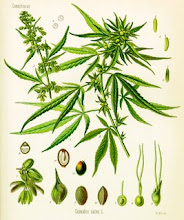Source: http://www.marijuanahomedelivery.ca/list.html
International Classification of Diseases 9 - CM 1996
Chronic Conditions Treated With Cannabis
Encountered Between 1990-2001
©2001 Tod H. Mikuriya, M.D.
Epilepsy
AIDS Related Illness 042
Post W.E. Enephalitis 062.1
Chemotherapy Convales V66.2
Shingles (Herpes Zoster) 053.9
Radiation Therapy E929.9
Viral B Hepatitis, chronic 070.52
Viral C Hepatitis, chronic 070.54
Lyme Disease 088.81
Reiters Syndrome 99.3
Post Polio Syndrome 138.0
Testicular Cancer 186.9
Adrenal Cortical Cancer 194.0
Brain malignant tumor 191.
Cancer, site unspecified 199
Lympho & reticular ca 200
Myeloid leukemia 205
Diabetic Gastroparesis 250.6
Porphyria 277.1
Amyloidosis 277.3
Autoimmune disease 279.4
Henoch-Schoelein Purpur*** 287.0
Schizophrenia(s) 295.x
Major Depression, Sgl Epis 296.2
Major Depression, Recurrent 296.3
Bipolar Disorder 296.6
Anxiety Disorder+ 300.00
Panic Disorder+ 300.01
Agoraphobia 300.22
Obsessive Compulsive Dis. 300.3
Dysthymic Disorder 300.4
Neurasthenia 300.5
Writers∫ Cramp**** 300.89
Impotence, Psychogenic 302.72
Alcoholism+ 303.0
Opiate Dependence+ 304.0
Sedative Dependence+ 304.1
Cocaine Dependence+ 304.2
Amphetamine Dependence 304.4
Alcohol Abuse+ 305.0
Tobacco Dependence 305.1
Psychogenic Hyperhidrosis 306.3
Psychogenic Pylorospasm** 306.4
Psychogenic Dysuria 306.53
Bruxism 306.8
Stuttering* 307.0
Tic disorder unspec 307.20
Tourette's Syndrome 307.23
Persistent Insomnia 307.42
Nightmares 307.47
Bulimia 307.51
Tension Headache 307.81
Psychogenic Pain 307.89
Post Traumatic Stress Dis. 309.81
Org. Mental Dis.hd inj 310.1
Nonpsychotic Org Brain Dis. 310.8
Brain Trauma 310.9
Intermittent Explosive Dis 312.34
Trichotillomania 312.39
ADD w/o hyperactivity 314.00
ADD w hyperactivity 314.01
ADD other 314.8
Pschogenic PAT 316.0
Parkinsons Disease 332.0
Huntingtons Disease+ 333.4
Restless legs syndrome 333.99
Friedreich∫s Ataxia 334.0
Cerebellar Ataxia 334.4
Spinal mm atrophy II 335.11
Amytrophic Lateral Sclerosis 335.2
Other spinal cord disease 336
Syringomyelia 336.0
Reflex Sympath Dystrophy 337.2
Multiple Sclerosis 340.0
Other CNS demyelinating 341.
Hemiparesis/plegia 342
Cerebral Palsy+ 343.9
Quadriplegia(s) 344.0x
Paraplegia(s) 344.1x
Paralysis, unspecified 344.9
Epilepsy(ies)+ 345.x
Grand Mal Seizures** 345.1
Limbic Rage Syndrome** 345.4
Jacksonian Epilepsy** 345.5
Migraine(s)+ 346.x
Migraine, Classical+ 346.0
Cluster Headaches 346.2
Tic Doloroux+ 350.1
Bell∫s palsy 351.0
Thoracic Outlet Synd 353.0
Carpal Tunnel Syndrome 354.0
Mononeuritis lower limb 355
Charcot-Marie-Tooth 356.1
Neuropathy+ 357
Muscular dystrophies 359
Macular Degeneration** 362.5
Glaucoma 365.23
Dyslexic Amblyopia** 368.0
Color Blindness* 368.55
Conjuctivitis 372.9
Drusen of Optic Nerve 377.21
Optic neuritis 377.30
Strabismus & other binoc 378
Nystagmus, Congenital 379.5
Meniere's Disease 386.00
Tinnitus 388.30
Hypertension+ 401.1
Post Cardiotomy Syndrome 429.4
Raynaud∫s Disease 443.0
Thromboangiitis Obliterans 443.1
Polyarteritis Nodosa 446.0
Asthma, unspecified 493.9
Cystic Fibrosis 518.89
Dentofacial anomaly pain 524.
T.M.J Sydrome 524.60
Gastritis+ 535.5
Peptic Ulcer/Dyspepsia 536.8
Colitis, Ulcerative 536.9
Pylorospasm Reflux 537.81
Regional Enteritis & Crohns 555.9
Colitis+ 558.9
Colon diverticulitis 562.1
Constipation 564.0
Irritable Bowel Synd. 564.1
Dumping Sydrome Post Sur 564.2
Pancreatitis 577.1
Nephritis/nephropathy 583.81
Ureter spasm calculus 592
Prostatitis 600.0
Epididymitis** 604.xx
Pelvic Inflammatory Disease 614
Endometriosis** 617.9
Premenstrual Syndrome+ 625.3
Pain, Vaginal 625.9
Menopausal syndrome 627.2
Eczema 692.9
Psoriatic Arthritis 696.0
Psoriasis 696.1
Pruritus, pruritic+ 698.9
Alopecia 704.0x
Lupus 710.0
Scleroderma 710.1
Dermatomyositis 710.3
Eosinophilia-Myalgia Syn. 710.5
Arthritis, Rheumatoid+ 714.0
Felty∫s Syndrome 714.1
Arthritis, Degenerative 715.0
Arthritis, post traumatic+ 716.1
Arthropathy, Degenerative+ 716.9
Patellar chondromalacia 717.7
Ankylosis 718.5
Multiple joints pain 719.49
L-S disk dis sciatic N irrit 722.1
IVDD Cerv w Myelopathy 722.71
Cervical Disk Disease 722.91
Cervicobrachial Syndrome 723.3
Lumbosacral Back Disease 724.x
Spinal Stenosis 724.02
Lower Back Pain 724.5
Peripheral enthesopathies 726
Tenosynovitis 727.x
Dupuytens Contracture 728.6
Muscle Spasm 728.85
Fibromyagia/Fibrositis 729.1
Melorheostosis 733.99
Scoliosis 754.2
Spina Bifida Occulta 756.17
Osteogenesis imperfecta 756.51
Ehlers Danlos Syndrom 756.83
Nail patella syndrome 756.89
Peutz-Jehgers Syndrome** 756.9
Mastocytosis 757.33
Marfan syndrome 759.82
Sturge-Weber Eye Syn** 759.6
Insomnia+ 780.52
Chronic Fatigue Syndrome 780.7
Tremor/Invol Movements 781.0
Myofacial Pain Syndrome** 782.0
Anorexia+ 783.0
Hiccough+ 786.8
Vomiting 787.01
Nausea+ 787.02
Diarrhea 787.91
Pain, Ureter 788.0
Cachexia 799.4
Whiplash 847.0
Back Sprain 847.9
Shoulder Injury Unspec 959.2
Knee, ankle & foot injury 959.7
Motion Sickness 994.6
Anaphylactic or Reaction 995.0
Trachoria Growths
+ Represents citations from pre-1937 medical literature
* From Eugene Schoenfeld, M.D.
** From Dale Gieringer, PhD CA NORML Hotline
*** From Robert Wilson, Hayward Hempery
**** Barry R. McCaffrey 12-30-96 (quote from John Stuart Mill 1867)

